Trimming your cat’s claws doesn’t necessarily have to be stressful. Your cat’s claws need to be trimmed and dulled to save your furniture and stuff that they can get their hands all over.
Through this article, you’ll understand that there are many ways through which you can keep your cat’s claws dull. This can be done through nail trimming. Many people aren’t comfortable doing this, but it isn’t usually a big deal once you perfect the act.
The Fear of Nail Trimming
Cat owners usually tend to fear trimming and dulling their cat’s claws because they are usually concerned about cutting them too short or causing a wiggly feline. The best way to calm this fear is by asking a professional vet or groomer about the procedure and helping you train yourself for it. They can tell you the proper techniques through which you can calmly dull your cat’s claws.
However, they might even tell you that the best way to get used to it yourself and help the cat get used to it is starting this when the cat is at a young age. However, if you still feel weird about doing it yourself, the vet might take up the task and help you do it every day.
How to Trim the Cat’s Claws
The first and foremost step you need to take to dull your cat’s claws is making it all seem very positive and lively to the cat. Make sure you start slowly and simply instead of reaching out for all the nails. Give a reward to your cat after every nail you dull, and then your cat would be easy about it after a few more tries.
Make sure you don’t cut them very short. The cat’s claws can be tricky to cut because of the excessive moving sometimes, but make sure you only cut the tip off the nails. Avoid trimming the area underneath the nails, as that is where the nerves and the blood are.

Black Nails
If your cat has black nails, you’ll notice that the base of the nail is quite rough and more triangular. It mostly comes out to a sharp hook, where there are usually no nerves or blood. Hence, it is safe to cut the tip-off. Another way is by applying gentle pressure to the trimmer without cutting.
Apply pressure only after you’ve examined where you have to cut. If your cat reacts to the pressure, it might be hard to control it to dull the cat’s claws again, because of which one should be careful.
What to Do if the Nails Start to Bleed?
If you accidentally make the cat’s claws bleed, you’ve cut them a little shorter than you should have. This calls for damage control. You can use styptic powder, use a clean bar of soap and run it through the nail that is bleeding. In this case, the soap will act as an agent to plug the vessel and stop the bleeding.
However, this will lead to your cat getting nervous, and you might not be able to dull or trim your cat’s claws until they are no longer nervous. You might need to throw away the nail clippers and duller for some time and show the cat you won’t be using it anymore. After that, gradually gain your cat’s trust, and eventually, you’ll get its claws back under the clipper. However, you might want to be gentle with the cat’s claws this time.
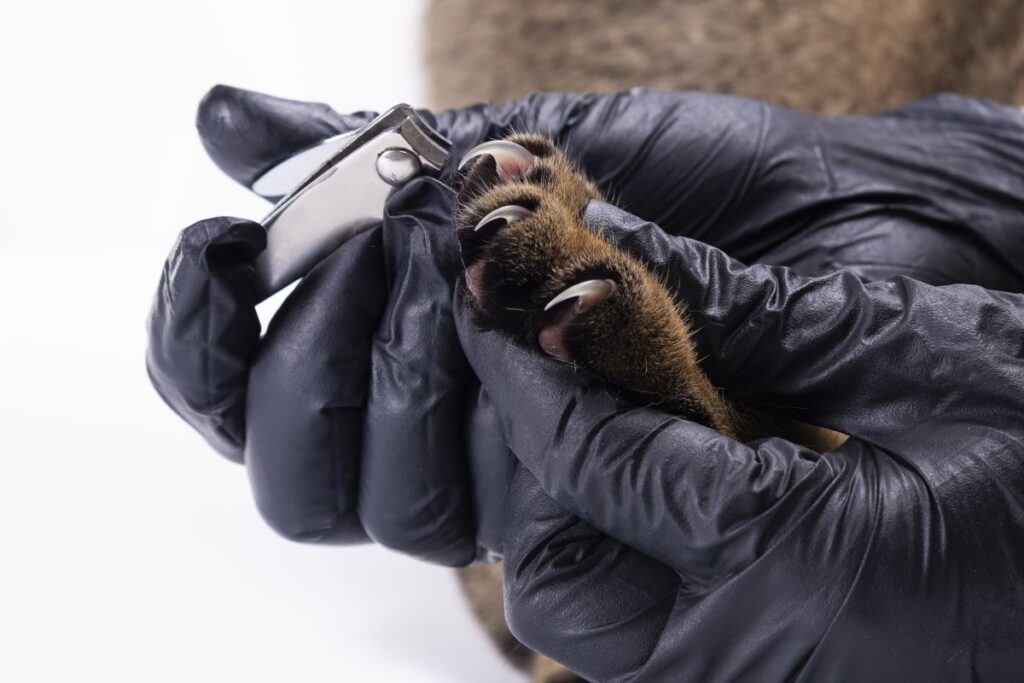
Why Do Cats Claw?
First of all, it is essential to understand that clawing tends to be a normal behavior from the side of cats. The owners do not understand it, but this is more like a cat thing. It isn’t much you can do about it, as cats tend to use their claws for different purposes. They might do it to scrape the old nail layers off or capture and hold their prey. However, this might be surprising for a few people, but cats claw due to pressure, anxiety, and boredom.
How to Dull the Cat’s Claws Effectively?
1. Trim them regularly
Once you start trimming your cat’s claws, make sure you do so regularly. The dull cat’s claws tend to cause less damage than the sharp ones. Hence, make sure you do and start by first handling your cat’s paw and then press the pad, use a claw clipper, and snip off the top of the nail.
However, one has to be careful while doing this because doing so carelessly might cause the cat’s claws to bleed. That’ll just raise anxiety and fear in the cat and make it claw even more.
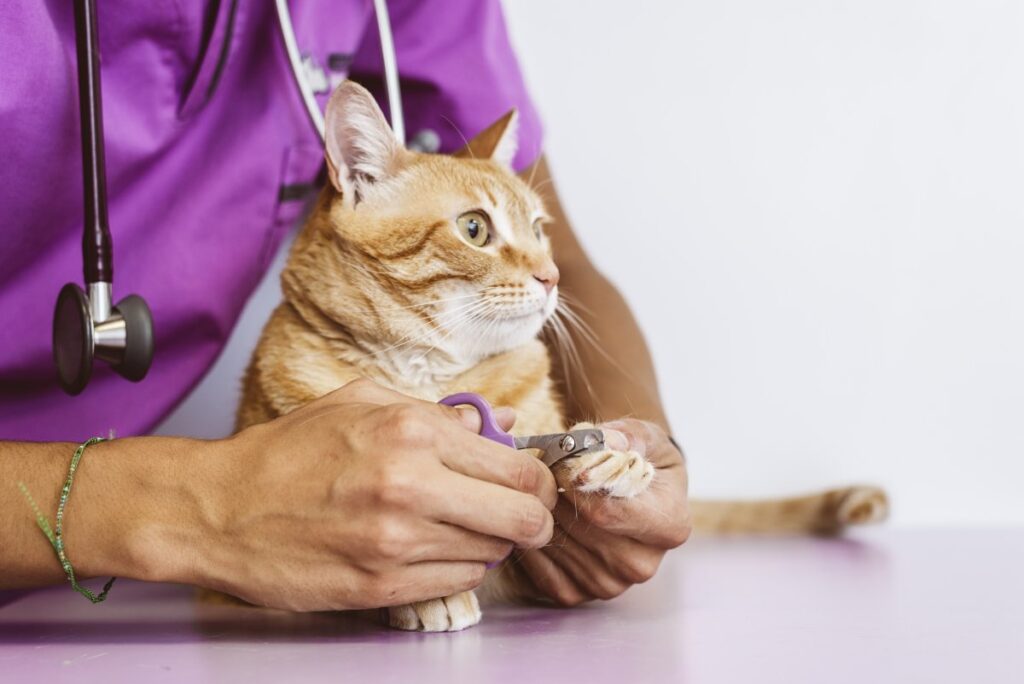
2. Take it slow
Taking the cat’s claws’ dulling process a little slow is important. You have to make sure you cut one and then pause to check if there is any bleeding. Make sure your cat is comfortable and doesn’t feel anxious. Keep on rewarding it with treats and toys after each nail is cut.
3. Position the cat carefully
While cutting the cat’s claws, make sure that you position your cat in a way that makes it hard to move but still makes it feel comfortable. Make sure you can view the cat and its claws properly. You could put it on your lap and make it face the other way while you get a clear view of the paws. Take one of the paws in your hand and then gently rub it before dulling. Once you’re done doing this, the cat will be relaxed enough to get its nail trimmed and dulled.
Conclusion
Conclusively, this article has talked about how an owner can effectively dull its cat’s claws. This is an important step because sharp claws can lead to a lot of damage around the house, making a huge mess. This isn’t good for the owner or the cat; hence it is essential to dull the cat’s claws, but make sure it’s comfortable and less frightening when you do so.

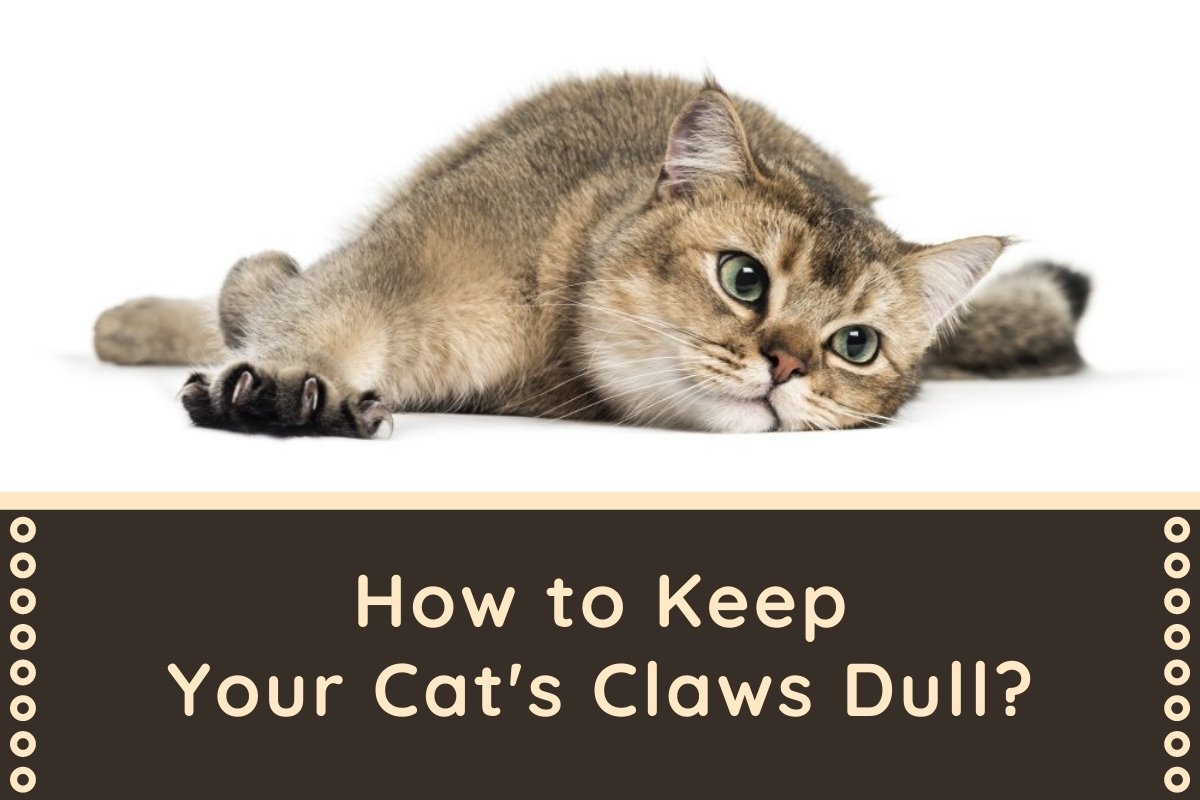
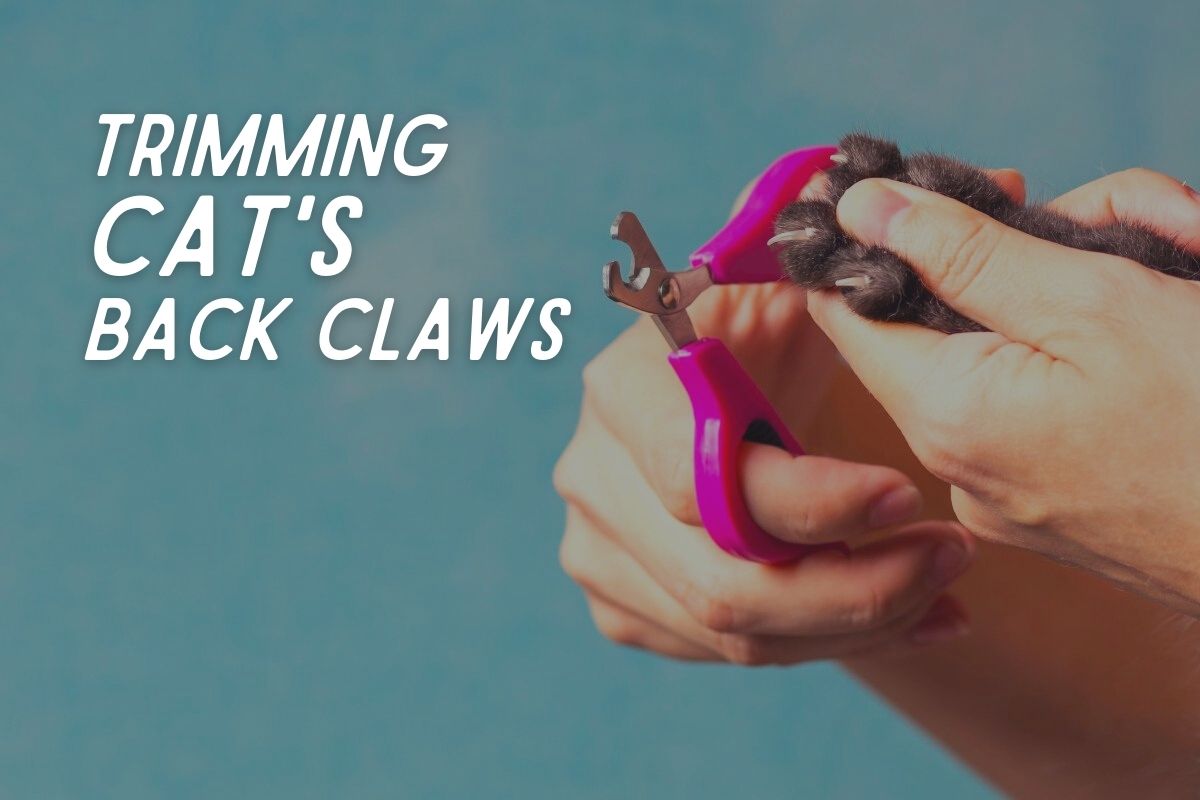

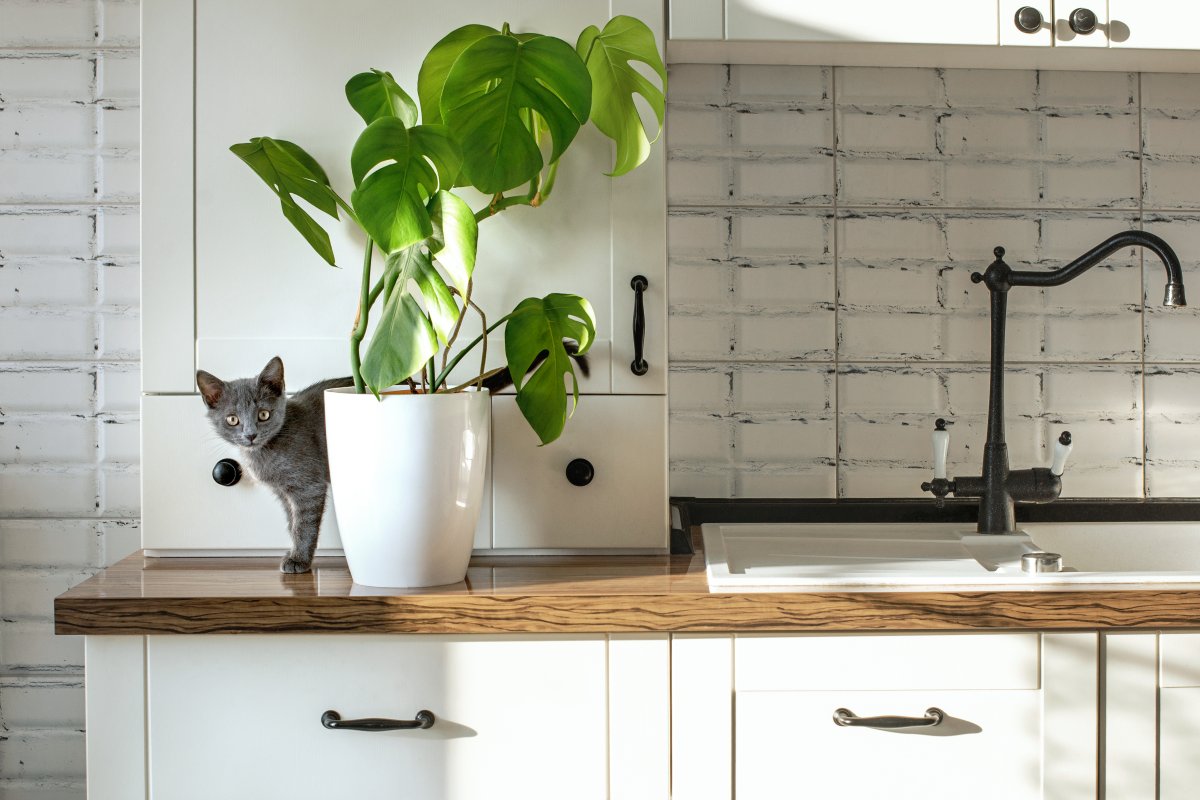
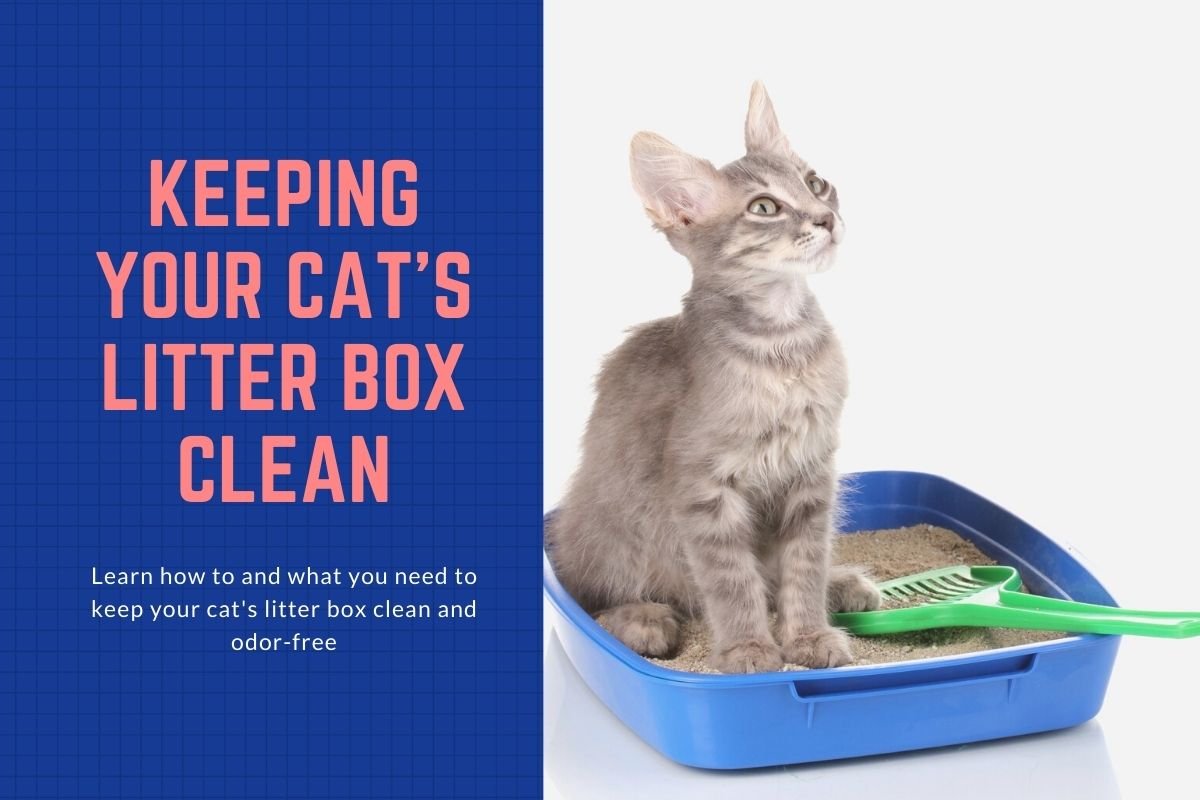


2 comments